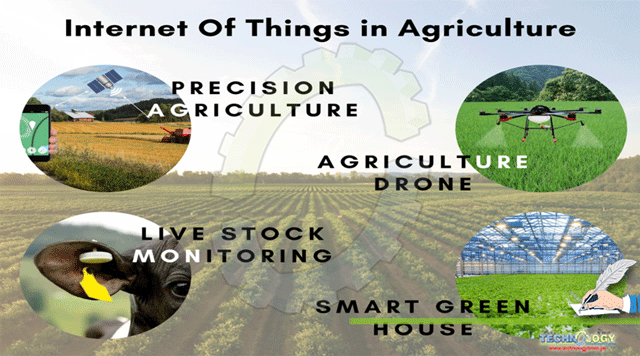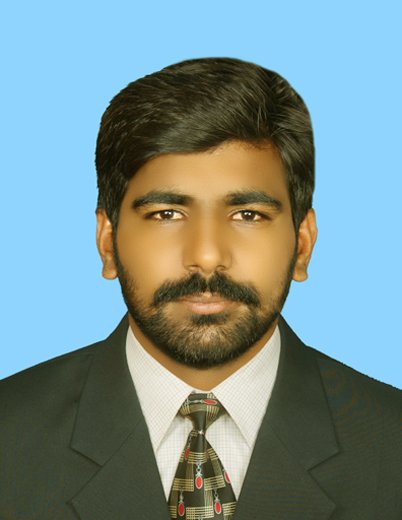Precision agriculture is an aspect of farm management that makes use of information technology to assure exceptional agricultural production and food security.

By Muhammad Alamgeer, Muhammad Amjid*, Muhammad Sajid, Muhammad Usama Ali and Hassan Munir
Assuming that the global population is projected to hit 9.7 billion by 2050, or 20.6% of the current population, food security is emerging as the greatest concern facing the entire world. It is estimated that by 2050, 68% of the earth’s population will migrated in cities, up from 54% in 2018, that will reduce the arable land area which is currently accessible. On the contrary, all of the lands on earth are not arable due to a number of constraint including soil quality, climate and great variations within the homogeneous land. Additionally, due to pollution, soil erosion, and land degradation, the rate at which arable land is diminishing outpaces the rate at which it is recovering. Pakistan is a predominantly agricultural nation, with agriculture accounting for 38.5% of all jobs in the labor force and 19.5% of the nation’s GDP. Sadly, Pakistan’s agricultural output is declining, with a heavy emphasis on chemical fertilizers, pesticides and genetically modified organism (GMO) seeds. Although GMO crops have proven to be profitable for Pakistan, they are bad for biodiversity, particularly in the country where they account for 95% of yields from hybrid maize and Bt (Bacillus thuringiensis) cotton. The country is implementing several steps to ensure food security. The introduction of the IoT altered the parameters of numerous industries and sectors, including healthcare, vehicle tracking technology, smart homes, cities, and agriculture.
Uses of IoT in Precision Agriculture:
Without the technology of sensors, smart agriculture is not viable. Sensors are employed to collect and measure various environmental variables and factors that may have an impact on crop output. Accurate sensor data collection is key to the success of precision agriculture for managing crops and soils specifically. For accurate and site-specific autonomous activities, nearly all of the machinery and vehicles (such as the tractor, harvester, unmanned aerial vehicle, and sensor device) are fitted with remote sensing tools like the Geographic Information System (GIS) and the Global Positioning System (GPS). There are several different types of sensors used in precision agriculture, however mostly there are just two. The first is the use of remote sensing and intelligent multipurpose image sensors that could be built into unmanned aerial vehicles (UAV), railroads, and fixed position components. These sensors can perform a wide range of tasks, including soil and vegetation/crop mapping, crop phenology, crop height, yield estimation, fertilizer effect and biomass, plant water stress detection and drought conditions, pest identification and management, weed detection, and greenhouse monitoring, when combined with deep learning. The second kind of sensor is more frequently employed, tailored to their use case, and able to be placed all over the playing field. Airflow, soil moisture, electrochemical, capacitive humidity, position, mechanical, optical, and temperature sensors are the most widely used types of sensors.
Use of UAVs in agriculture:
UAVs are an evolving and independent technology that combines several other technological stacks, such as robotics, onboard computing, artificial intelligence (AI), information and communication technology (ICT), IoT, and batteries, in addition to the IoT ecosystem. The reason UAVs are so popular is because they bridge the gap between robots’ on-ground limitations due to uneven terrain, obstructions, and speed and the limitations of remote sensing imaging by satellites due to weather and cloud penetration. UAVs have several uses, but their primary role is monitoring, which includes soil and crop mapping and sampling, yield forecasting, weed identification, pest and disease detection, and assessing soil and crop stress. The second one is an application phase where fertilizer, insecticides, and herbicides are sprayed as well as seeds are sown. UAVs come in two primary varieties: fixed-wing and rotary-wing. Because of their long-range, high speed, altitude, and crash tolerance capabilities, fixed-wing UAVs are better suited to work across wide regions and more closely resemble airplanes in terms of their flying characteristics. There are further categories for rotary-wing UAVs, such as the helicopter and multi-rotary type; typically, multirotor UAVs are termed according to the number of their rotaries, such as quadcopters, hexacopters, and octocopters. Despite their simplicity, UAVs have certain drawbacks as well. Low battery life and efficiency, payload, communication range, and short flight times are some of the technical constraints of UAVs. The typical flying time of fixed-wing UAVs is 5 hours, and they have a communication range of up to 100 kilometers. Researchers studying battery efficiency are attempting to create more effective hybrid batteries as well as battery management and optimization methods.
Smart Agriculture methods
To meet their needs, people have been working to increase food production for ages. To do this, they are implementing a variety of innovative agricultural practices. Advanced agricultural practices including vertical farming, hydroponics, and phenotyping considerably increase their effectiveness by adopting IoT and integrating it into them after the advent of IoT. UAVs, different kinds of sensors, and IoT-based equipment are often utilized technologies and tools.
Precision Agriculture:
Precision agriculture is centered on the optimal use of natural resources by preserving the natural environment. Implementing precision agriculture entails four steps: characterizing the extent and scale of variability in soil and crop attributes, interpreting the significance and causes of variability, managing variability on a spatial and temporal scale, and monitoring the outcomes resulting from variability management practices, which could only be done efficiently through the Internet of Things.
Greenhouse Farm:
Precision farming and greenhouse farming are comparable in some informal contexts and serve somewhat different purposes. The primary distinction is that greenhouse farming is carried out in an enclosed or remote area where environmental variables are regulated and monitored by sophisticated technologies. Despite the fact that farming through the greenhouse is not a new practice, the Internet of Things (IoT) has found uses for greenhouse practices including controlling temperature and humidity as well as monitoring the shed.
Urban farming:
As was already mentioned in the article, more people are moving into urban areas, and these areas are the biggest consumers of food. Urban farming is an amazing concept that combines a number of techniques, including rooftop, indoor, vertical, hydroponic, aquaponic, and aeroponic farming. While climate change and water shortages have a negative impact on agriculture and present significant difficulties for long-term food security. The considerable distance from food producers to consumers creates transportation and chain supply costs that have an impact on food quality and increase pollution from transport vehicles, among other difficulties. People can grow food nearby through urban farming as a solution to their need for affordable and fresh food. Urban farming completely depends on a controlled atmosphere and system that enables it to thrive year-round, day and night, in any climate.
Geo-Spatiotemporal Mapping and Sampling
Crop field assessment and mapping are two simple but essential uses of precision agriculture. Weed management, vegetation indices, and water stress evaluations are applications that rely on geographic and temporal sampling. It can also be applied to the GIS-based assessment of spatial variability. Remote sensing, aerial surveying with planes, and remote imagery with UAVs are all geospatial methods.
Smart Irrigation
Pakistan is becoming a country with a water shortage as the rest of the world struggles with this issue. IoT and smart technologies can be used to construct weather-adaptive irrigation systems that use less of the limited water supply. Depending upon the crop and stress level of the soil, smart irrigation is intended to only irrigate when absolutely essential. Sprinkler irrigation can be applied for precise on-site irrigation, which is a great instrument for dealing with the variable element of water stress.
Pest and Weed Management System:
The crop can be negatively impacted by pests, weeds, and pathogens, and simply weeds can impair yield by up to 30%. However, pesticides and herbicides can have a negative impact on profits and product quality, which is a major worry for consumers. Smart systems and the Internet of Things (IoT) can identify agricultural diseases, pests, and weeds early on and alert farmers to them. These systems are also capable of eliminating pests and pathogens with pinpoint accuracy using different herbicides. Smart cars can also be utilized for this.
Yield Evaluation
The most important aspect of smart agriculture is yield evaluation. The first stage in any kind of assessment is data collection. Only IoT, WSNs, and UAV imaging allow for precise and ongoing monitoring of biotic and abiotic variables. Unstructured data is produced in massive numbers by all of these devices. The collected data can be used to forecast crops, identify diseases early, and plan harvests. These tools enable farmers to reduce labor and operating expenses, carry out precise disease and pest evaluations, estimate their sales and profits, and schedule and plan a more profitable harvesting period, that ultimately results in lower input costs and higher profitability.
Precision Fertilization:
The potential to save money and the environment simultaneously is one of the most significant uses of IoT in agriculture. Inadequate fertilization can have multiple negative effects. For example, although plants occasionally require fewer nutrients, using too much fertilizer may cause the soil to become saline or drain away, which might rot the plant, lower output, raise costs, and hasten climate change by evaporation. Likewise, production and growth would decrease if a plant required greater nutrients than it was receiving. Additionally, because they are dependent on the type of plant, the soil, and the weather, the ratios of different fertilizer components, such as NPK and water, are crucial for crop productivity. Variability is another issue that must be carefully charted and monitored in order to be controlled.
Conclusion:
The effectiveness of IoT along with its uses in crop production are discussed, as well as problems and their remedies. For agricultural applications, the IoT ecosystem, UAV use, different kinds and benefits, multiple communications protocols, and their benefits and drawbacks are also investigated. We also discussed the potential applications of IoT in various smart agriculture practices, such as precision agriculture, greenhouse farming, and urban farming, citing case studies of significant participants in the food business. We also talked about some typical IoT applications in agriculture. As the first stage in smart agriculture for any poor country like Pakistan where farmers face high upfront expenses, think about crop sampling and geospatial and temporal mapping. We conclude after presenting an outline that Pakistan’s agricultural industry is making a lot of efforts to address concerns like climate change, water scarcity, and food insecurity. The utilization of new information technology and artificial intelligence is largely lacking in locally developed initiatives.

Authors: Muhammad Alamgeer, Muhammad Amjid*, Muhammad Sajid, Muhammad Usama Ali and Hassan Munir